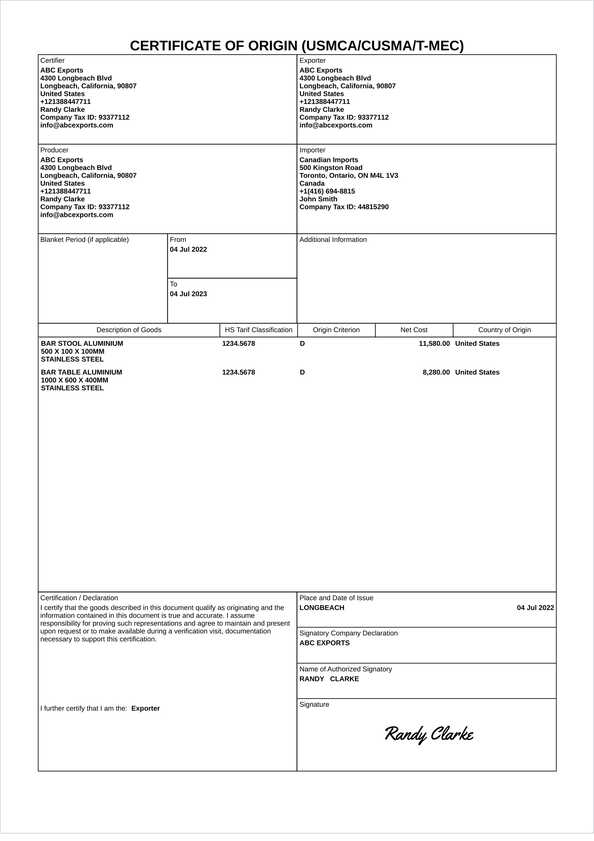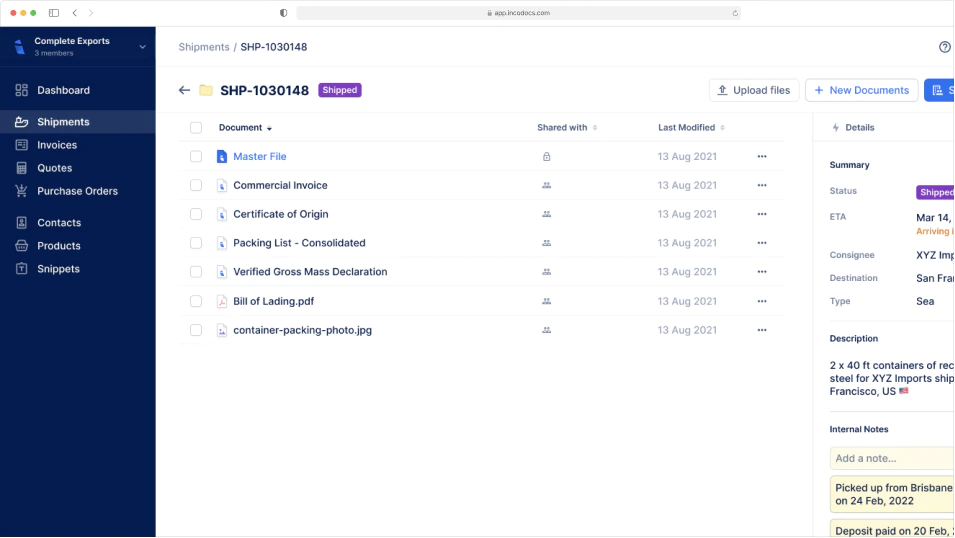IncoDocs raises $1.2M seed round led by Maersk GrowthRead the announcement

USMCA Certificate of Origin Template
What is a USMCA Certificate of Origin used for?
The USMCA Certificate of Origin is used by the importer’s freight forwarder, customs agent, or customs broker during the import customs clearance process. These brokers will use the certificate as proof to customs authorities that the goods have been manufactured within one of the 3 regions to eliminate import duties on imported goods. Certification can be made on a single shipment basis or completed with a blanket certification to cover products for a 12-month period. Note that NAFTA Certificates of Origin are no longer used as the proof of origin of shipments after the 1st of July 2020. To take advantage of the duty-free status of the USMCA/CUSMA/T-MEC agreement, the goods that have been shipped must qualify as originating in each of the 3 territories which can be proved by providing specific information. There are new rules of origin that determine whether the goods qualify under the new agreement. There are 3 official names for the free trade agreement. It has a name for each country that participates in the agreement: • USA – USMCA (United States-Mexico-Canada Agreement) • Canada – CUSMA (Canada-United States-Mexico Agreement) • Mexico – T-MEC (Tratado entre Mexico, Estados Unidos y Canada) in Mexico
How to create a USMCA Certificate of Origin
Open IncoDocs
Open IncoDocs in your browser and navigate to the “Export Docs” section.
Choose the USMCA Certificate of Origin template
Click on 'New document set' and select the USMCA Certificate of Origin template along with any other export documents you wish to create.
Fill out & customize your doc
Fill out the document, customize template fields to your needs and add your company letterhead. To save time and prevent re-entry errors, enter key shipment data into the Master File to have it sync across all other documents in your set automatically.
Sign & seal
Click on the signature box at the bottom of your document to create and place a digital signature then hit “Save & Quit”. On the document preview screen, click on the ‘More’ dropdown button and select “Add company seal” to place a digital stamp.
Download or share
Download or share documents from IncoDocs in 1-click. Documents can be downloaded as PDF or CSV which can be imported into other systems without manual re-entry.
Your questions, answered.
What information is included on a USMCA Certificate of Origin Document?
Below are the data elements required for the USMCA / CUSMA / T-MEC agreement:
Free to start,
Easy to use.
Setup in 5 mins.
